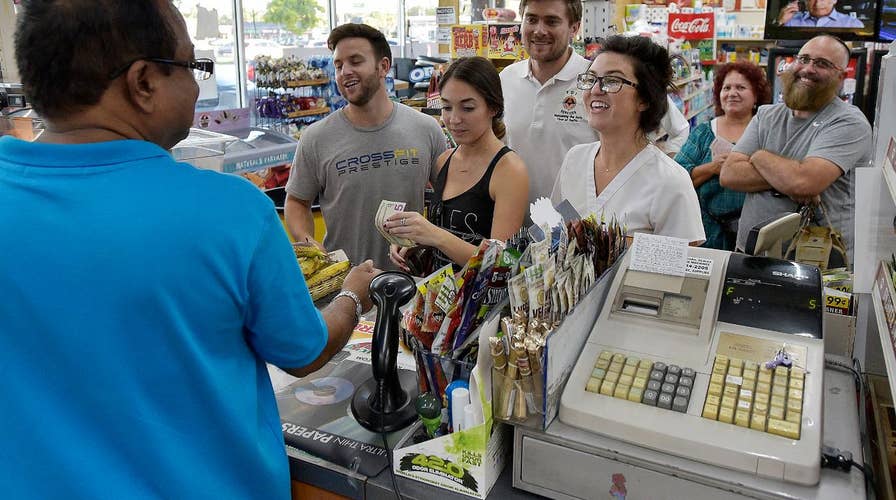Lottery fever sweeps the nation
No Mega Millions winner means jackpot rises to a record $1.6 billion on Tuesday; Jacqui Heinrich reports.
The Mega Millions jackpot drawing Tuesday has soared to $1.6 billion ... and counting.
In an effort to create jackpots like this one, lottery officials have not only made it harder to win, but have continued to lie to us about the benefits of the lottery.
About half of Americans play the lottery according to the most recent survey, compared to almost 70 percent in the 1980s. That means the lottery needs to extract more money from fewer people, specifically from the lowest-income households, which spend on average $412 on tickets per year – more than four times the amount spent by the highest-income households.
In an effort to draw more people to the lottery, Mega Millions decided to decrease each person’s chance of winning in order to grow the jackpots. As the jackpot gets bigger, more people are willing to buy a ticket.
Before 2017, players picked five numbers between 1 and 75 and then one number between 1 and 15. Now, each player picks five numbers between 1 and 70 and then one number between 1 and 25.
This increases someone’s chance of matching five numbers and receiving some sort of prize, while decreasing the chance of winning the whole shebang.
What’s more, the price of a ticket has doubled.
So, your chance of winning has gone down, but if you lose (and you will), at least your money is going to a good cause – or so you've been told.
In the middle of the 20th century, when lotteries first started in the U.S., they were sold to states as a way to benefit the American public by providing additional funding for education.
This means that as the jackpots get bigger and people spend more money on lotteries – $223 per year by the average American, in fact – there should be more money in state budgets to spend on education.
But that isn’t happening.
Most state legislatures haven’t been using the lottery money for additional education funding. Instead, they're using it to fund the basic education budget, and using the money that would normally fund education on other things altogether. As a result, public schools rarely get a budget boost.
Mega Millions' profits are split between 46 lottery jurisdictions – 44 states, Washington D.C., and the U.S. Virgin Islands. Overall, 27 states earmark some or all lottery revenue for education.
In D.C., the lottery dollars go to a general fund; in Colorado, they fund environmental protections; and in Kansas, some of the money pays for juvenile detention facilities.
A recent study from the North Carolina Center for Public Policy Research showed that many states – including California, Florida and Michigan – simply substitute lottery revenues for normal appropriations. As of 2016, North Carolina devoted a smaller portion of its total budget to education than it did before starting the lottery.
With states like New York getting $3.3 billion in revenue from the lottery in 2016, that is a pretty big bait and switch.
So now, not only do you have a smaller chance of winning (with a 1 in 300 million chance, you’re three times more likely to be killed by a vending machine), your $2 lottery ticket expense isn’t even going towards the good cause you were told it was.
This doesn’t necessarily mean that it’s time to ax the lottery. But it does beg the question: Is lottery money a good thing for a state?
It does fund some government services, but it isn’t always clear exactly which ones. And the harm of gambling addiction must be taken into account.
Personally, I’m fine with it either way. But lottery officials and state legislators need to tell us the truth, not lie to us by omission.
For now, I’m off to buy a ticket for this Mega Millions jackpot. I mean, someone’s gotta win.
Editor's note: A previous version of this column appeared on The Conversation.

